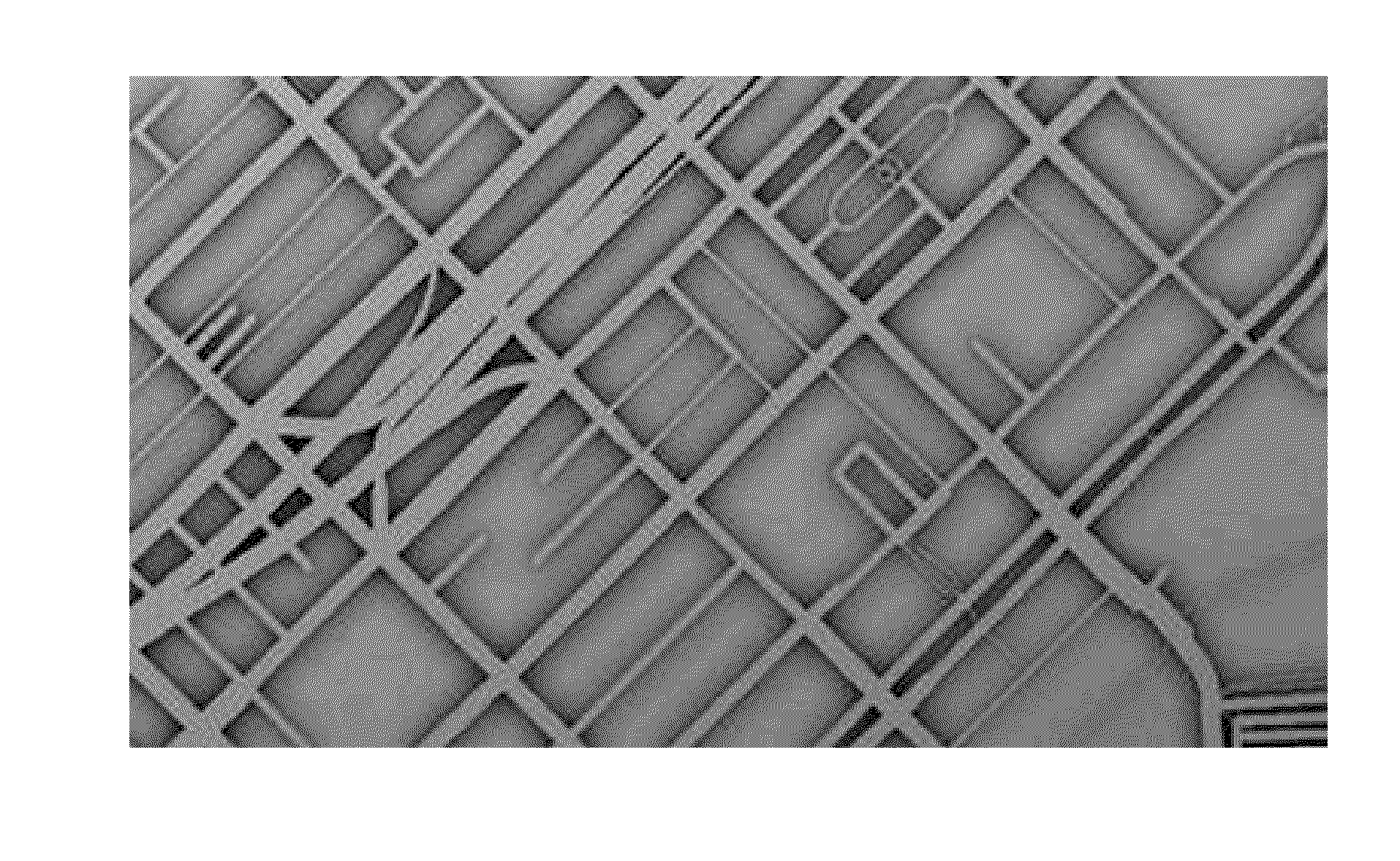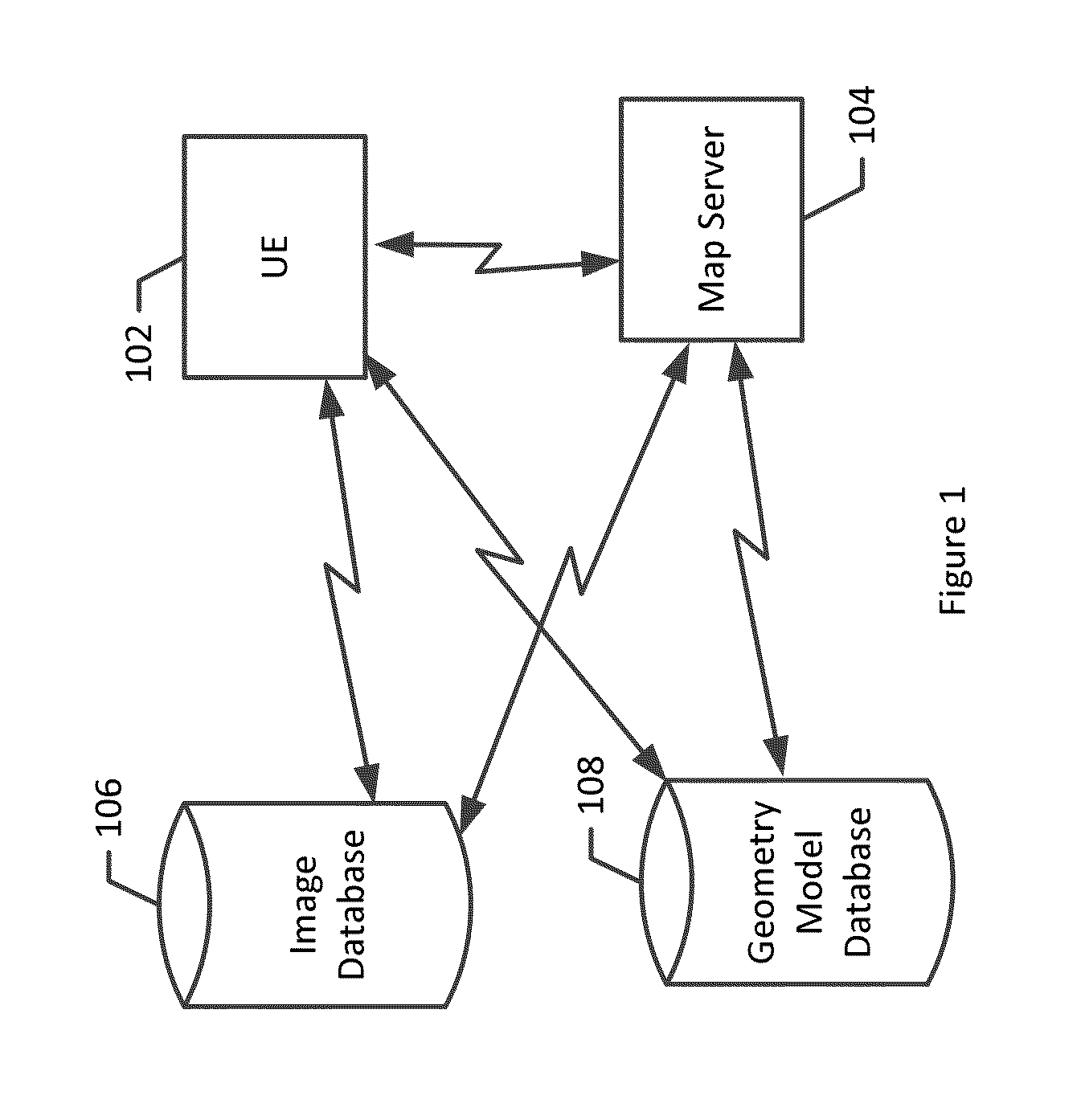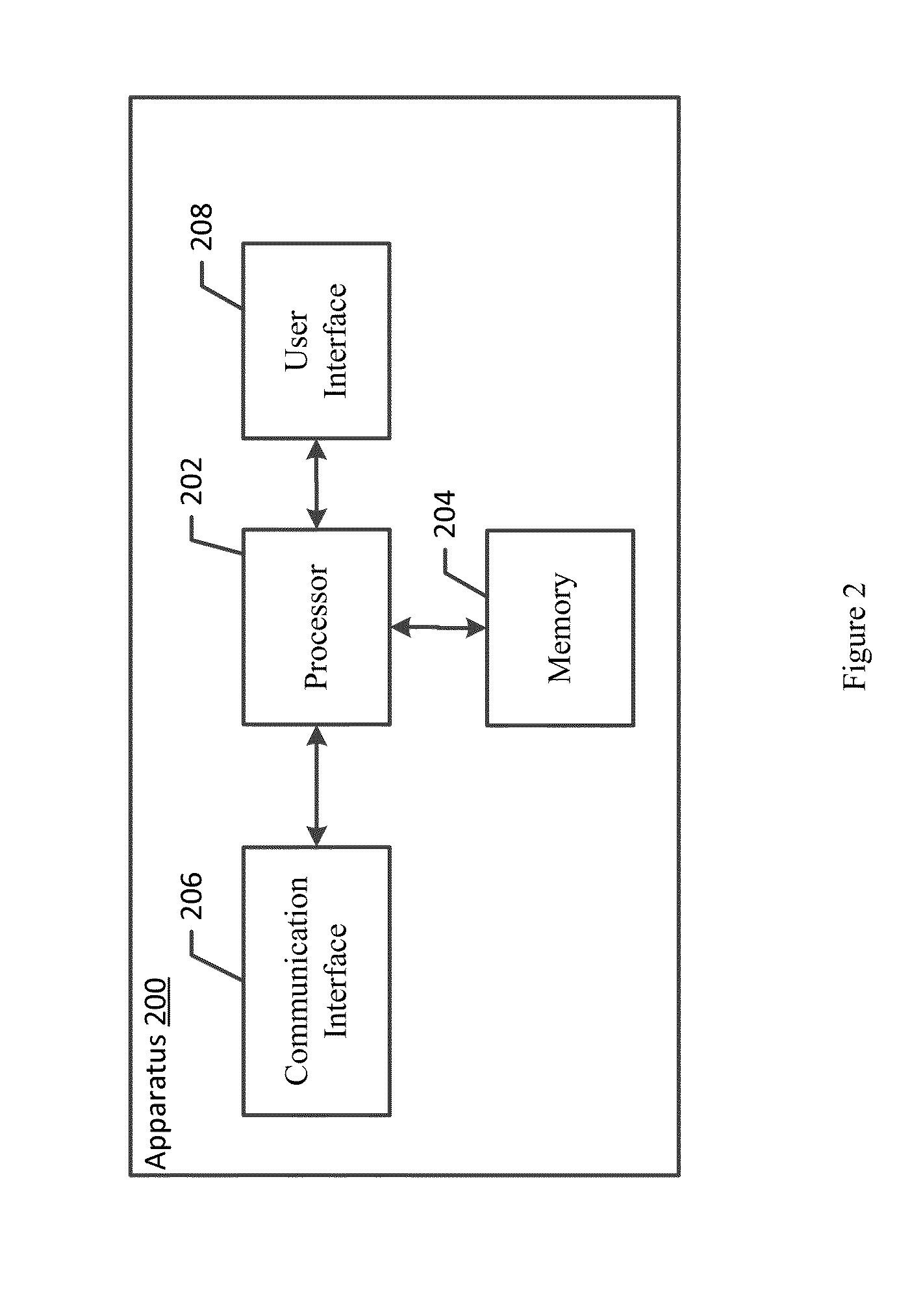Method and apparatus for generating a composite image based on an ambient occlusion
a composite image and ambient occlusion technology, applied in the field of map rendering, can solve the problems of combining a standard two-dimensional map or aerial image with a high-definition (hd) three-dimensional content map that may produce less than desirable, dimensional image may contain too much detail, and the transition between the two-dimensional image and the three-dimensional content may be abrup
- Summary
- Abstract
- Description
- Claims
- Application Information
AI Technical Summary
Benefits of technology
Problems solved by technology
Method used
Image
Examples
example darkness
of Embossing Ambient Transfer Maps
[0073]FIGS. 14A-14E illustrate various darkness levels of the embossing in an composite image. FIG. 14A depicts the two dimensional image, e.g. aerial image. FIGS. 14B-14E depict various darkness levels of the embossing map from a lighter embossing at FIG. 14B to a darker embossing at FIG. 14E.
Example Transition Between a Two Dimensional Image and an Composite Image
[0074]FIGS. 15A-15B, 16A-16B, and 17A-17B illustrate example transitions between two dimensional images and composite images. FIG. 15A depicts a two dimensional image, e.g. aerial image. FIG. 15B depicts a composite image based on the two dimensional image and a embossing map generated based on the ambient occlusions of a three dimensional building model.
[0075]FIG. 16A depicts a two dimensional image, e.g. aerial image. FIG. 16B depicts a composite image based on the two dimensional image and an embossing map generated based on three dimensional LiDAR geometry model. Details of the two di...
PUM
 Login to View More
Login to View More Abstract
Description
Claims
Application Information
 Login to View More
Login to View More - R&D
- Intellectual Property
- Life Sciences
- Materials
- Tech Scout
- Unparalleled Data Quality
- Higher Quality Content
- 60% Fewer Hallucinations
Browse by: Latest US Patents, China's latest patents, Technical Efficacy Thesaurus, Application Domain, Technology Topic, Popular Technical Reports.
© 2025 PatSnap. All rights reserved.Legal|Privacy policy|Modern Slavery Act Transparency Statement|Sitemap|About US| Contact US: help@patsnap.com



